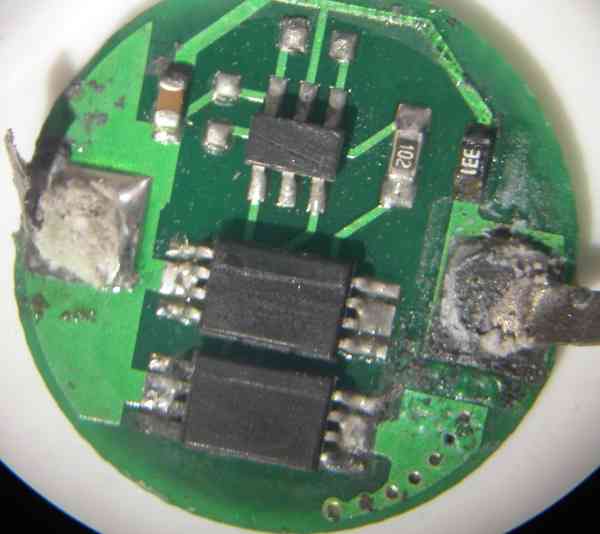Curious_character
Flashlight Enthusiast
- Joined
- Nov 10, 2006
- Messages
- 1,211
Right after buying some AW protected Li-Ion cells, I put some of them into the freezer. Judging by the terminal voltage, they were roughly half charged. I figured the combination of cold temperature and partial charge would maximize the lifetime of cells I'm not actively using.
About a week after storing them, I took out an 18650 cell and found a very low voltage, around 0.2 volts, and erratic. The cell would charge for less than a minute (after warming to room temperature), then stopped. I could get very little energy out of it before it would open again. After trying several charge cycles with the same result, I put it aside. Later, I saw that part of the white rim around the positive terminal had been stained brown. Considering this a bad sign, I got rid of it.
Now I've found two others, an 18650 and 18500 (AW protected), both put into the freezer brand new and checked after a couple of weeks. These showed the same low voltage. When I put them on the charger, they showed a charge for a few seconds, then stopped. After taking off the charger, they're completely open, zero volts, and won't charge at all. I do have a number of other cells of various sizes which fortunately survived. It's apparent that the first cell wasn't a fluke, and that these cells simply can't reliably survive storage at around 0 F.
Sanyo shows a permitted minimum storage temperature of -20C for their Li-Ion cells, and my freezer is above this. From my experience, it looks like simply leaving a flashlight in a car on a cold night has a good chance of permanently ruining these protected AW cells. When camping on a cold night, it would be necessary to keep the flashlight inside your sleeping bag if you want to have a working battery in the morning.
So what's the coldest temperature it's safe to store these cells at? Are there any readily available Li-Ion cells which can handle temperatures around zero degrees F without destruction?
c_c
About a week after storing them, I took out an 18650 cell and found a very low voltage, around 0.2 volts, and erratic. The cell would charge for less than a minute (after warming to room temperature), then stopped. I could get very little energy out of it before it would open again. After trying several charge cycles with the same result, I put it aside. Later, I saw that part of the white rim around the positive terminal had been stained brown. Considering this a bad sign, I got rid of it.
Now I've found two others, an 18650 and 18500 (AW protected), both put into the freezer brand new and checked after a couple of weeks. These showed the same low voltage. When I put them on the charger, they showed a charge for a few seconds, then stopped. After taking off the charger, they're completely open, zero volts, and won't charge at all. I do have a number of other cells of various sizes which fortunately survived. It's apparent that the first cell wasn't a fluke, and that these cells simply can't reliably survive storage at around 0 F.
Sanyo shows a permitted minimum storage temperature of -20C for their Li-Ion cells, and my freezer is above this. From my experience, it looks like simply leaving a flashlight in a car on a cold night has a good chance of permanently ruining these protected AW cells. When camping on a cold night, it would be necessary to keep the flashlight inside your sleeping bag if you want to have a working battery in the morning.
So what's the coldest temperature it's safe to store these cells at? Are there any readily available Li-Ion cells which can handle temperatures around zero degrees F without destruction?
c_c


